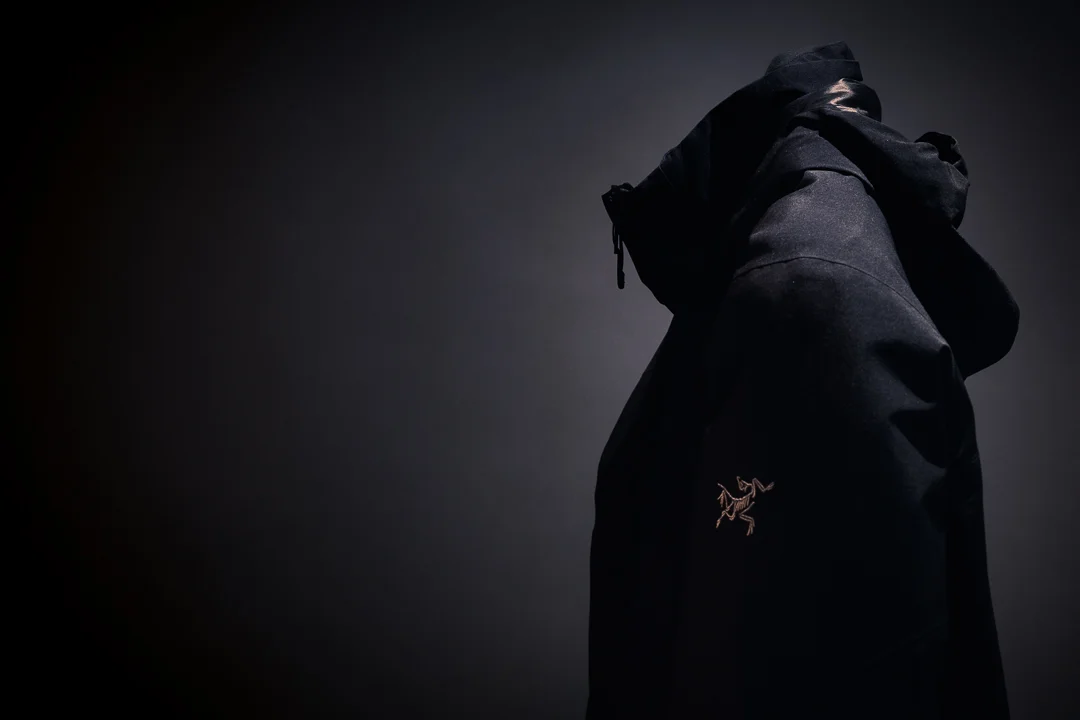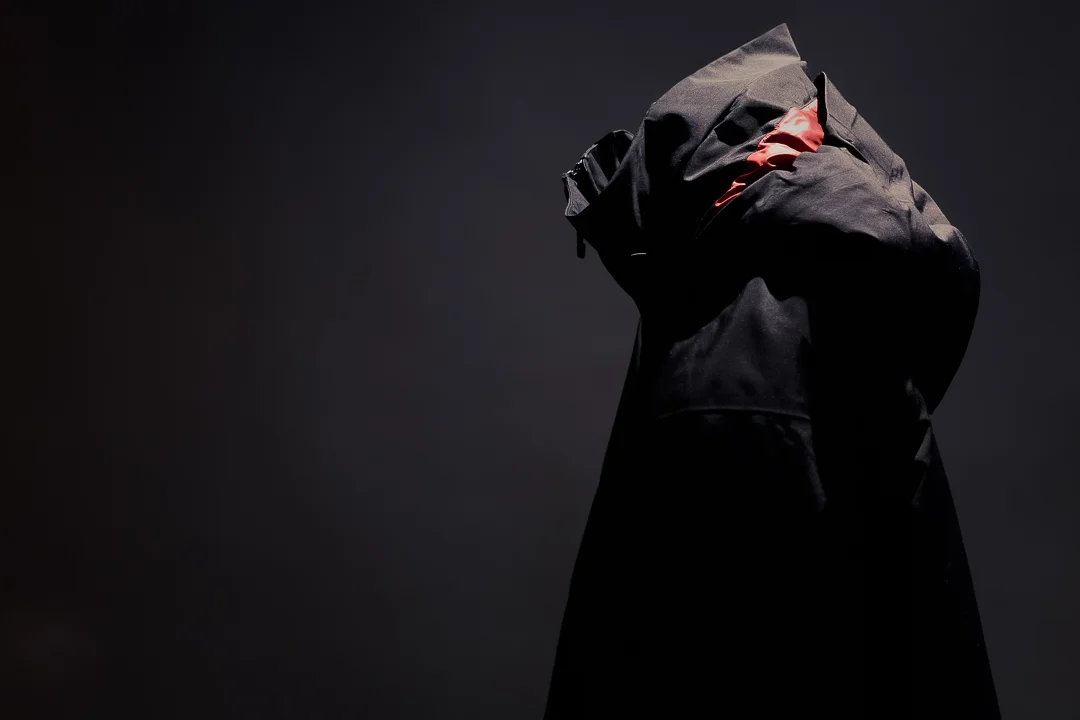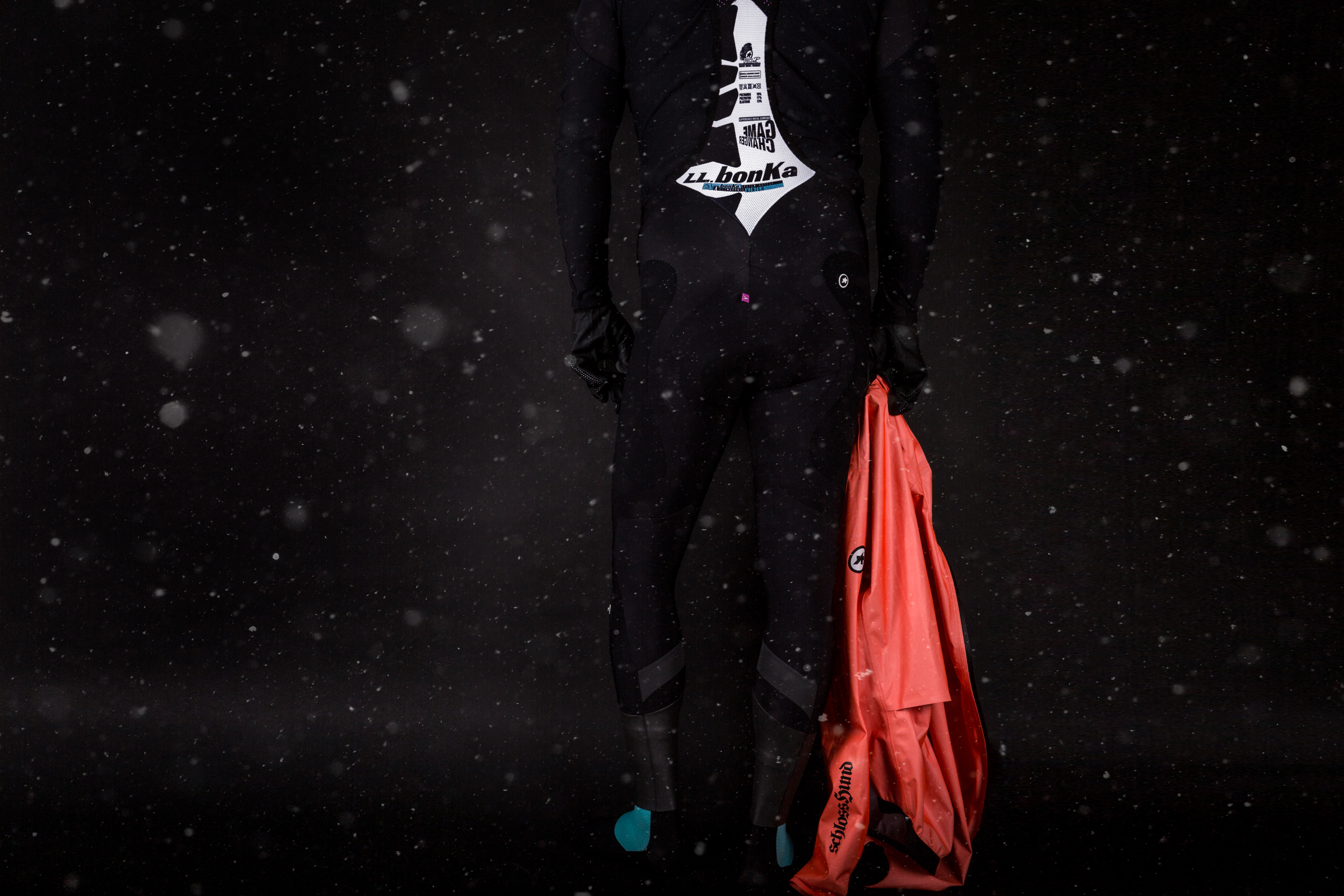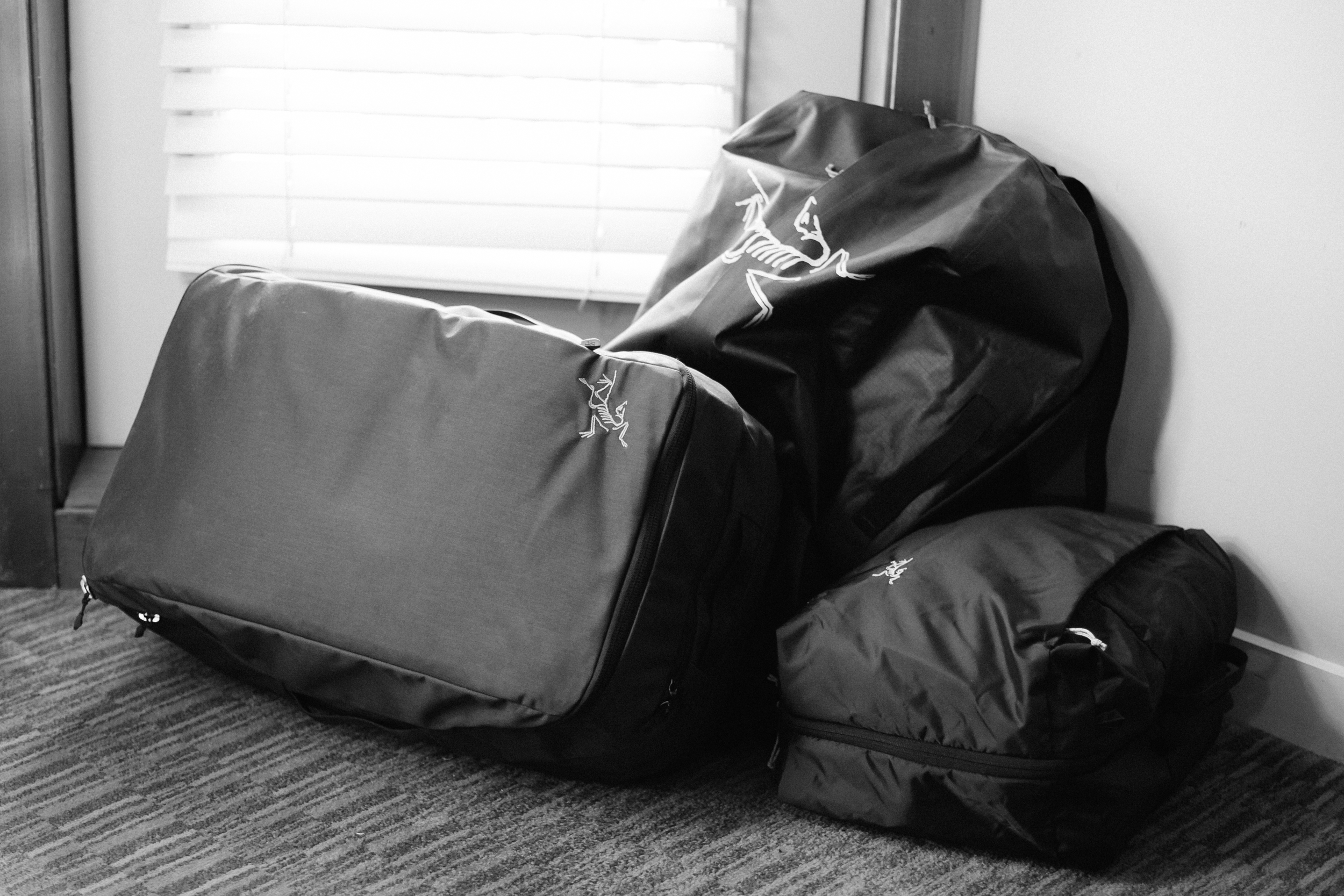The Low 'Down': A Winter Outerwear Guide

a functional foundation
It's not that I’m a fair weather friend, I just hate being cold. In fact I am a committed subscriber to the belief that there is no such thing as bad weather, just bad choices. The best way to ensure your enjoyment of any activity in any weather is to dress for it. This principle is best directly applied to winter. When it comes to clothing there are a few largely generalized approaches to cold weather preparedness. First, you can either wear multiple thinner layers or you can wear fewer but thicker layers. Second, you can choose from a variety of materials and insulations to fend off the elements. Which approach to take comes down to the requirements of your activity and the options best suited to it.
Since this is a guide to down winter wear, where do we start? Active wear has seen incredible innovations and improvements since a time when people just threw more wool at the problem. While there continue to be incredible advancements in outer shell materials it seems that in todays market the greatest divide in winter outerwear choices is actually what’s on the inside. Should you choose synthetic or natural insulation? Go into any outfitter and you'll notice that your choices seem to be divided on this plane. It’s a tough choice because each of these insulating materials has a long list of pros and a list of drawbacks. Is there a silver bullet solution? No. Synthetic fills (such as Coreloft) offer lower volumes and better heat retention when wet, however their main drawback is weight and they don't compress well for packing. Natural insulations (commonly a duck or goose down) are incredibly light, pack well, and provide the greatest insulating properties. Consider though that they are bulkier, have poor heat retention when wet, and require more maintenance.
While neither synthetic or natural insulation is clearly better than the other, many people do have a preference. For me, it’s all about natural down fill. I prefer its weight benefits and greater insulating properties and am not concerned by the added bulk or garment care. Pay proper attention to a down parka and you'll enjoy it for a very, very long time.
Now that winter has set in at full force here in North America, I thought it would be a good time to share my approach to cold weather preparedness. For this I’ll use selection of down outerwear offers from Arc’Teryx to help illustrate the differences in each and some of their ideal use cases based on my experience with each of them. Drawing on my experience as a photographer, traveller, climber, cyclist, skiier, hiker, camper, and active outdoor enthusiast who spends a lot of time outside, I hope to help you decide how to properly prepare for your outdoor activity. Don’t let the weather stop you from getting outside or getting the job done.
the low down
Since this guide (it's not a review) is going to focus on down, let’s begin by looking at the various types of down and the different methods of construction. There's no better place begin than answering the question “What is down?” The common misconception is that down is feathers. That's not quite true. It’s actually the softer plumage. This is a layer under the feathers that is found on the belly of water fowl birds such as geese and ducks. This is what keeps them warm and dry. So you’re essentially utilizing the same material to keep you warm. It should be noted that because of the way that down is harvested and gathered it may have some mix of feathers in it. Also some down garments will have a purposeful mix of feathers inside. Check your label.
You may be asking why is down better than feathers? Well, down is smaller and fluffier which creates better insulation through greater loft to trap air and that's what you want. On the other hand, feathers are larger, have less loft and a hard quill. Not so great for filling a garment with.
Now what about fill? If there is one part of down that people get but don't understand it is fill. But what does it mean? Fill or sometimes referred to as 'fill power 'is a measurement of the volume (loft), quantity, and quality of down. It is represented as a 3 digit number usually between ~300 and ~900 representing a value in cubic inches per ounce. As you’d expect, in this case the more the better. Meaning as the number increases so does its measurement across those three parameters. But it's tricky, and I'll explain that in a second. While the fill power is not a truly defined measurement of an insulating value, it is the representative of the ability of the down to trap air. This is the best quantifying metric for the warmth of down in a garment. So here is the tricky part. How can two garments have the same fill but be very different in size and warmth? Well fill is a measurement of volume, quantity, and quality in a cubic inch of space. The more cubic inches built into the garment, the more of that fill power you have. Here is an example that I'm making up for reference. If Jacket A and Jacket B are constructed with the same fill, but Jacket has 10 cubic inches of space and Jacket B has 100 cubic inches, the fill power is the same but you have 10x the amount of down helping keep you warm. That's why a mid later and a parka may have the same fill rating.
Why do you hear or read "grey goose down" in product descriptions or names? It is just a reference to the color of down from the bird. The color bares no effect on the properties the down exhibits.
Resources: Wikipedia explanation of fill power
Resource: Arc'Teryx down guide
Before we move on to that actual garment comparison lets quickly touch on what the different construction methods are. There are two generally used methods for constructing down filled garments. They are called Sewn Through and Box Baffle. The first and most common is 'Sewn Through. In this method the outer fabric and inner fabric are sewn together not just at the perimeter seams but also across the garment to create the cavities or pockets known as baffles. These baffles are where the down is. This method is cheaper as it is a faster process which also uses less material. The drawback here is that those stitched seams that create the baffles are exposed and create spots where body heat is lost.
The box baffle method differs in that rather than sewing the outer and inner materials in places to create the baffles, individual baffles are made like little down pillows. As you can imagine this takes a lot more material, more time, and more weight to construct the final garment. Box baffle is superior in that it allows to down to maintain its maximum loft without any migration of down between baffles. This is the method usually used to construct higher end jackets and parkas.
When it comes to warmth, box baffle is the optimal of the construction methods. But neither is always used exclusively. A jacket can and is often a combination of the two. Sometimes box baffles are used along the body core and sewn through is used on the extremities where more mobility is needed.
A deep background has been set so now let's get on to the comparison part of this guide.
Cerium SL
The Cerium SL is a “super light” down filled jacket. It can be worn as a stand alone jacket in warmer weather but is intended to be worn as a low volume, light weight mid layer. This means it’s best to be used under an outerwear shell and over a base layer. The Cerium is made from lightweight 20 GSM nylon ripstop fabric with a DWR (Durable Water Repellant) finish to help repel water off its surface. This will help keep the insulation dry so you stay warm. The jacket is constructed with the traditional sewn through method outlined above. Insulating the Cerium SL is an 850 grey goose down fill and the cut is the Arc’Teryx ‘Trim Fit.' This keeps the Cerium low and close to the body which is ideal for layering. It's important to note that the Cerium SL is not all down. Arc'Teryx use a method they call 'Composite Mapping' to put down in all the right places for maximum warmth while putting synthetic Coreloft fill in areas most prone to collecting moisture such as the cuffs and shoulders. This helps give you more protection should the weather turn foul or you start sweating. For comparisons sake in this write up my size large Cerium SL weighs 9.7oz.
A lightweight mid layer is an essential item to have hanging in the closet.
Pros
- Lowest cost
- Lightweight
- Versatility: best for for layering
- Small size: packs into stuff pouch (great for a pillow when camping or when traveling)
Drawbacks
- Layering: requires additional coverage for complete protection
- Light DWR, no membrane
- Unsealed zippers
- Short length
Camosun Parka
Introduced in the Fall/Winter 16 season, the Camosun Parka is the newest of the three here in the comparison. With the word ‘Parka’ in the name, you know this means to be warm. The Camosun is part of the 24 collection which puts its use case squarely aimed at the urban customer. You can see this throughout the refinement of features it does, and importantly doesn’t have. Here is what I mean, Arc’Teryx have drawn from their vast experience on the mountain as well as their urban exploration line Veilance (here's my comparison of Arc'Teryx vs Veilance) to put together a really interesting piece of outerwear. The Camosun is a rough and tumble N150p-x Gore-Tex 2L Paclite fabric over a box fill construction that is insulated by a plentiful 750 fill power European goose down. That’s a lot of info so let’s unpack that. The outer shell is a 2 layer construction which means there is an outer layer that is DWR treated with the Arc’Teryx Nu water repellent and bonded to the Gore membrane behind it. This forms the outer shell over top of a box baffle where the down is contained. Here again, Arc’Teryx has used their Down Composite Mapping along with their Down Contour Mapping. That's a thin layer of synthetic insulation is placed between the down baffles and next to all areas of the Gore-Tex shell which protects the down from condensation. The Camosun Parka pattern is built around the Arc'Teryx ‘Athletic Fit’, which means it’s has more room than the tight fit but the pattern is closely fitted and articulated to the contours of the body. More importantly the Camosun is differentiated by a few key design features. For example the sleeves have internal cuffs (carryover from alpine experience) and thumb notches on the cuff for increased wrist mobility (carryover from the Veilance line). Added little comforts include soft lined pockets, a removable hood, and all hidden fasteners. I chose a medium size because when and where I turn to the Camosun I want a smaller more fitted silhouette. For comparison the weight of the size medium Camosun is 2lbs 3oz.
Pros
- Style
- High volume down fill
- Removable hood
- Soft touch pocket liners
- Strong wear abrasion
Drawbacks
- No venting
- Lack of two-way zipper (restricts movement when seated)
- High cost
- Rougher exterior shell
- No key minder in pocket
Macai Jacket
The Macai may be the pinnacle of down active wear that excels on the mountain. This jacket gives you all the luxury of an off mountain jacket together with the features you expect on the mountain. If you’re looking for the one coat that is going to serve all your diverse interests, this may be it. The designers have overlooked no technical and design feature in the Macai. It’s got everything you’d expect from taped seams, anatomical and articulated pattern, water tight zips, powder skirt, vents, lots of pockets, and of course a Recco reflector. In terms of features, the Macai is not for want. Since this is a blog about the details, here are the specifics. The Macai is put together with a soft N40p GORE-TEX with 3L tricot overtop of a box baffle constructed 750 fill European goose down. The cut of the pattern used to construct the Macai is the Arc’Teryx ‘Athletic Fit’, again keeping the jacket close to the body but with room for layering. Where this jacket really stands apart from its urban focused counterpart is really in the details such as the hood is a permanently affixed & insulated Drop Hood with a larger volume to fit over a helmet. The Macai also has venting to help you regulate your body temperature during activity. The list goes on and on. Don't believe me, just check out the product page linked above. It's got it all. For comparison sake, the Macai tips the scales at 2lbs 6oz for a size large. For me I chose the large size Macai because when I pull this out of the closet I'm planning to layer and be mobile throughout the day.
Pros
- Versatility: on and off the mountain
- High volume down fill
- Venting
- Exterior pockets
- Key minder in pocket
- Soft texture shell
Cons
- Small exterior pockets
- Bulkier size
- Non-removable hood
- Most expensive
- Cuff tab velcro too small
making the right choice
All things considered, I have to be honest that while all these jackets provide a lot of benefits I do find myself reaching for the Cerium SL most often. The versatility of the Cerium simply can’t be matched. It’s nearly an all year outdoor essential go anywhere piece of kit. It's great for cragging, backpacking, traveling, or layering under a shell. Its versatility is only amplified by its relatively affordable cost and packing size.
For all intents and purposes the Camosun and Macai are adaptations of the same jacket. Each see design adaptations to fit the needs of their urban or athletic uses cases. I can argue the benefits and merits for either, but not for one to really be greater than the other. They really are different tools for different jobs and you would be happy with the choice of either. The simple professional styling of the Camosun appeals directly to my design aesthetic but it’s lack of venting for heat management can be problematic in varying conditions. At the same time the Macai rewards you with such venting but adds bulk and a permanent large volume hood.
So while I won’t declare any one an outright winner, what I’ll do is provide a rough guide of the use case and time best suited for each.
- Mild temps (late spring, early fall, summer nights) - Cerium SL
- Cooler temps (early spring, late fall) - Cerium SL with a shell overtop
- Cold Temps (Winter) - Camosun if I need a professional dark coat to stay out of sight or Macai if the day calls for more activity and moving around.
- Really cold - Cerium SL with the Macai overtop.
I hope this writeup and down outerwear guide helps you know more about the types of down, the constructions methods, and some ideas on how to pick the right jacket for you.







